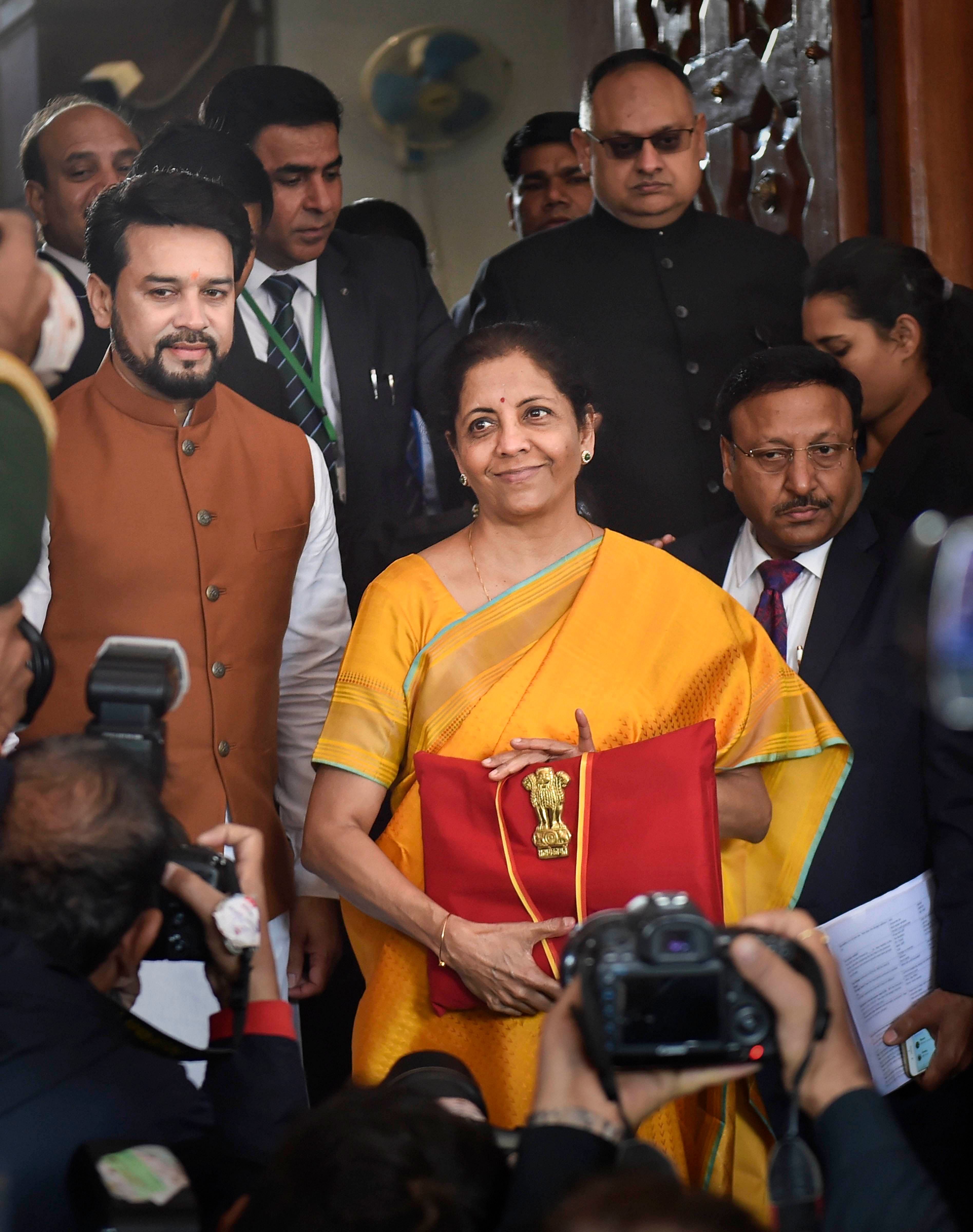
Unlike last year where the social sector found barely any mention in the Budget speech, this year, Finance Minister Nirmala Sitharaman chose to dedicate a considerable portion of the speech to the social sector. Through the three pillars of Aspirational India, Economic Development, and Caring Society, she emphasised the importance of agricultural and rural development, water and sanitation, skills, infrastructure, and health and nutrition.
With employment falling and GDP expected to grow by 5% in real terms against 6.8% last year (as per a PIB release), the question is how the Budget would boost consumption and demand while keeping the fiscal deficit in check. A closer look at the numbers reveals two important trends.
First, the budget is a reflection of the slowdown. Revised estimates (REs), a reflection of expenditure for the year for most schemes, have fallen across the board. For instance, even for government’s flagship Pradhan Mantri Jan Aarogya Yojana, focused on health insurance, the RE was only half of last year’s budget estimate (BE).
Similarly, difficulties in identifying farmers and ensuring timely disbursements of funds in recent months meant that REs for PM-KISAN declined from Rs 75,000 crore in the BE to Rs 54,370 crore in the RE—a decrease of 28%. Keeping the fiscal constraint in mind, the allocations have remained the same as last year’s BEs.
Second, the rise in allocations is primarily in capital-intensive schemes. Thus, the Department of Drinking Water and Sanitation, responsible for two important infrastructure schemes—Har Ghar Jal Yojana to provide tap water connections to every household and the rural Swachh Bharat Mission (SBM)—saw one of the highest increases at 17%.
Within the Health Department, one of the largest increases was for Pradhan Mantri Swasthya Suraksha Yojana responsible for setting up of AIIMS-type institutions and upgrading of government medical college facilities. Similarly, for urban India, allocations for the housing scheme (PMAY-U) rose by 17%.
Surprisingly, two schemes that are critical for 'Aspirational India' seem neglected. Under MGNREGs, despite Rs 61,230 crore already spent by January 30, 2020 and pending liabilities amounting to Rs 7,153 crore, allocations decreased by 13% compared to last year's RE.
Similarly, while the RE for National Health Mission (NHM) expenditure has consistently exceeded GoI’s allocations, funding has remained stagnant. With most rural infrastructure functioning well below norms set by the Indian Public Health Standards and existing health facilities being significantly overburdened (the average population served per government hospital bed in rural areas is 3,143), the shortfall in financing is likely to affect the quality of infrastructure and personnel.
(The Writer is Director, Accountability Initiative & Fellow, Centre for Policy Research)